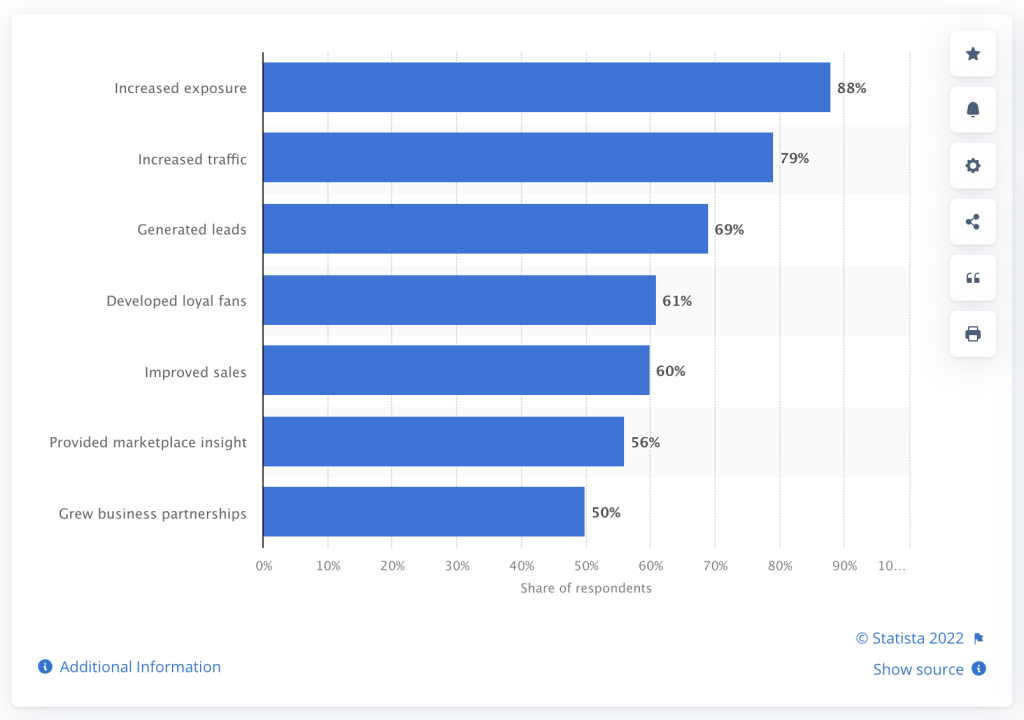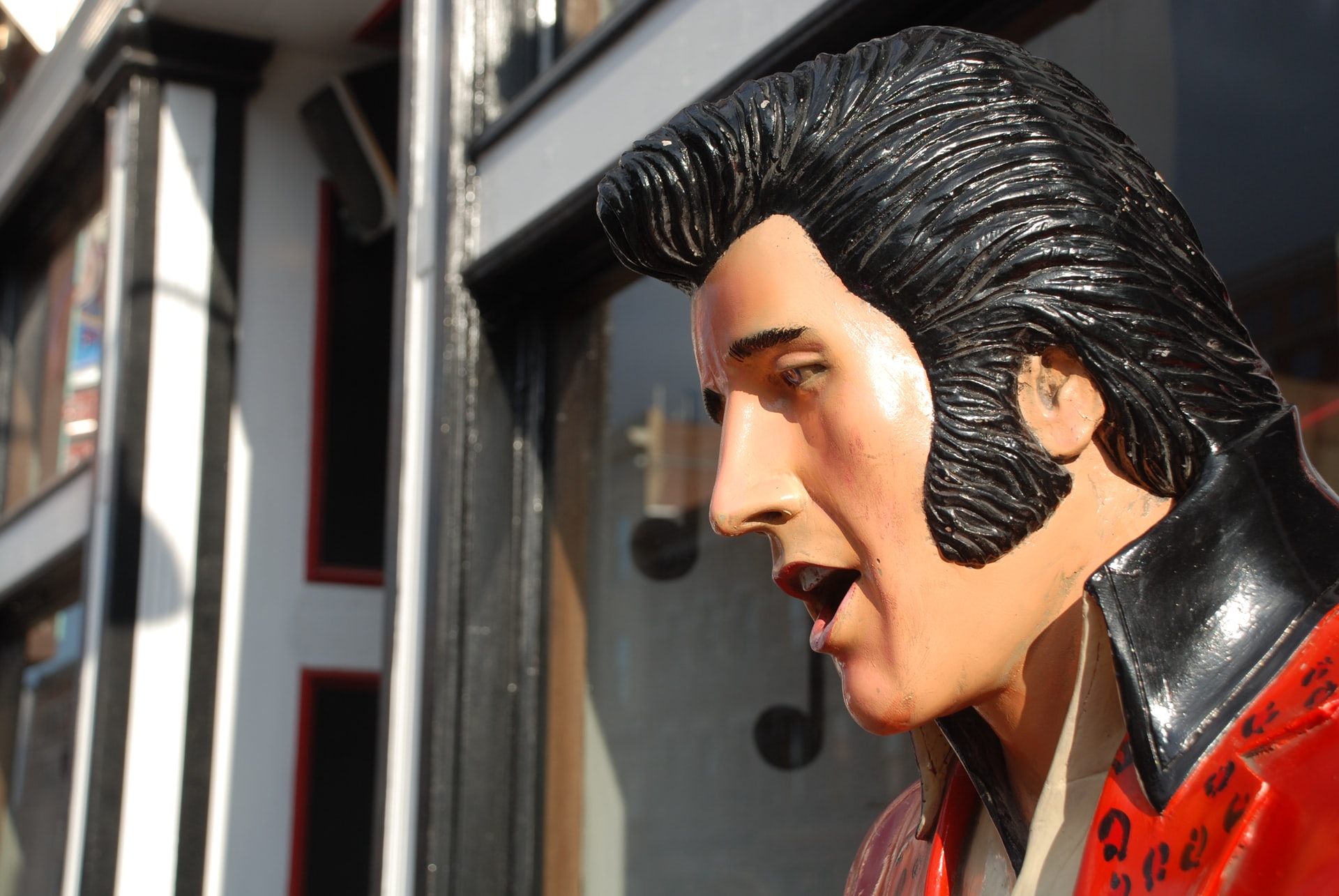6 Ways to Spot Fake Social Media Influencers With Ease
Influencer marketing is the new black – and for a reason. If you ace influencer partnership strategies, you can grow your business by achieving a bigger audience reach, targeting your core consumer demographic, generating more leads, and establishing a solid brand image.
Quick Links

Image source: https://www.statista.com/statistics/188447/influence-of-global-social-media-marketing-usage-on-businesses/.
Unfortunately, in our imperfect world, whenever the wind of success blows, scammers eventually arrive. Thousands of fake influencers are flooding social media in hopes of making easy money by taking advantage of brands and marketers, taking their money but providing no value in return.
We don’t want you to fall into this trap. Forewarned is forearmed, right? By learning a few simple tricks – 6 tricks, to be precise – you will be able to spot a fake influencer with ease.
Who Is a Fake Influencer?
Fake influencers are people who create an appearance of:
- having a big follower audience;
- being an opinion leader;
- living an attractive lifestyle others admire.
In reality, however, these huge audiences are mainly bots and fake accounts, not actual people. Thus, such an “influencer” has no influence whatsoever – it’s just a facade. Partnering with a fake influencer will bring no benefits to your business.
Statistics show that as many as 95 million Instagram accounts are bots – so accumulating an impressive fake follower base is not too hard for an aspiring social media scammer.
Why Is Influencer Fraud on the Rise?
The primary reason is the overwhelming allure of an influencer lifestyle. Getting paid for posting pretty pictures, receiving endless likes and free items from top brands – who would say no, right? Young people are especially drawn to this career choice.
Besides, the sheer ease with which you can buy bot followers nowadays contributes to the scope of the problem. Add to that another fact: it is also pretty easy to create an appealing, “expensive-looking” profile even if you’re not a Kardashian: fake geotags, the right background, and basic photo editing skills – voilà, you look like you’ve just earned your first million.
And of course, fake influencers take advantage of people’s blind trust in the face value of things, as well as their lack of awareness.
Let’s fix that.
How to Spot a Fake Influencer Like a Pro?
- Low Engagement Rates
Now, this is the basic and most significant indicator of an influencer’s “efficiency”. The higher the engagement rate, the more people interact and react to the influencer’s content – it guarantees lead generation for your brand.
To understand how engaged the influencer’s audience is, consider engagement in relation to their follower count.
If an influencer has, say 10,000 Instagram followers, but their posts get only a couple of dozens of likes and few comments – you’re very likely looking at a fake influencer profile.
However, remember: the bigger the audience, the lower the engagement rates – that’s another universal social media marketing principle. That’s why nano- and micro-influencers are more efficient at engaging their audiences than macro- and mega-influencers.
- Follower-to-Following Ratio
Another useful metric to look at is the follower-to-following ratio an influencer demonstrates.
With real influencers, the follower count is usually at least somewhat higher than the number of people they follow.
If you see an influencer profile with the opposite dynamic, it’s probably not a legit influencer.
- Follower Quality
We’ve already mentioned how easy it is to buy fake followers these days, and pseudo-influencers are quick to take advantage of this fraud opportunity.
So watch out for bot follower accounts, especially if they comprise the majority of an influencer’s follower count.
How to tell if it’s a bot? We’re sure you’ve seen one before.
- They have empty profiles. No profile picture, no bio;
- Hardly any content posted. Their feed is either completely empty or it has one or several low-quality posts.
- They don’t engage with other accounts actively.
You can use automated tools to quickly check how many fake followers an influencer has. No one is immune to being followed by bots, but if this number is too high, the influencer you’re checking is probably as fake as their audience.
- Engagement Quality
Sometimes, bot followers are programmed to actually leave comments under posts. This can create higher engagement rates, but of course, such engagement offers absolutely no value because it is not authentic.
So take a minute to look through the comments under an influencer’s posts.
Fake comments are usually generic and simplistic. It can be emojis or one-word comments that can fit pretty much any type of content, like ”amazing!”, “so cool!”, etc.
If you see several comments with the same text or emoji under multiple posts, it is also a red flag.
- Pay Attention to Posted Content
Turning away from followers back to our influencers: analyze their posted content and its quality.
Pay attention to:
- Captions. Are they generic or unique? Does the influencer repeat the same captions or create new texts matching the image/video they posted? True influencers are dedicated to authenticity.
- Visual quality. A real influencer will do their best to upload high-resolution, well-edited photos and videos. If the quality is consistently low, it’s likely that the influencer is fake.
- Brand mentions and engagement. Have they collaborated with brands before? Evidence of previous partnerships is a good sign.
- Consistent Activity
Last but not least: the consistency of an influencer’s activity on social media is key.
Authentic influencers care about their media presence and try to create a constant flow of content that would keep their followers engaged and curious.
They don’t necessarily post daily or upload dozens of stories every morning/evening, but they do not suddenly disappear for days or weeks, either (at least not for a good reason).
So take a look at the posting pattern of an influencer. It should be consistent, natural, and logical.
If an influencer comes and goes, abandoning their profile and then posting 10 photos within a single day out of the blue, it is likely fake.
Conclusion
Now you’re equipped with the most relevant tips that will help you spot a fake influencer. In a nutshell, they all boil down to one factor: authenticity – of content quality, activity, and audience engagement.
And don’t forget to be pragmatic with real influencers, too. Request relevant influencer metrics, assess their relevance to your brand, and discuss your budget in advance. Again, turn to special tools, such as the Instagram collaboration cost calculator, to have a better idea of your projected marketing expenses.
Author Bio: David Morneau

David Morneau is the co-founder and CEO of inBeat, a hybrid micro-influencer marketing SAAS/agency that helps brands scale their marketing efforts. He has helped over 200 DTC brands to date.
What Is WooCommerce Product Slider and Why Your Store Needs It
Why Do Product Images Matter So Much in Online Stores? When someone visits an online store the…
0 Comments9 Minutes
How to Streamline Your Customers’ Shopping Experience?
The goal for any online store is to make shopping as smooth as possible. When visitors move…
0 Comments8 Minutes
Strengthening Brand-Customer Relationships Through Gamified Loyalty Programs
Creating lasting connections with customers has become increasingly vital as the marketplace grows…
0 Comments6 Minutes
How to Use SEO and SEA Together in Search Engine Marketing
In digital marketing, search engine marketing (SEM) plays a critical role in improving online…
0 Comments10 Minutes
Content Marketing Growth Hacks: Real Shortcuts to Drive Traffic
Are you still lagging in content marketing? Sticking to these old strategies seems…
0 Comments10 Minutes
How to Build a Strong Local Following Using Social Media Marketing
In the days of likes, shares, and stories, local businesses have a golden opportunity to create…
0 Comments9 Minutes
Why WooCommerce is the Best Choice for Your Online Store?
WooCommerce stands out as a top option for anyone looking to build an online store. This platform…
0 Comments8 Minutes
How to Use AI-Powered SEO Tools for WordPress eCommerce
SEO is a critical factor in the success of any e-commerce WordPress store. As competition…
0 Comments11 Minutes








